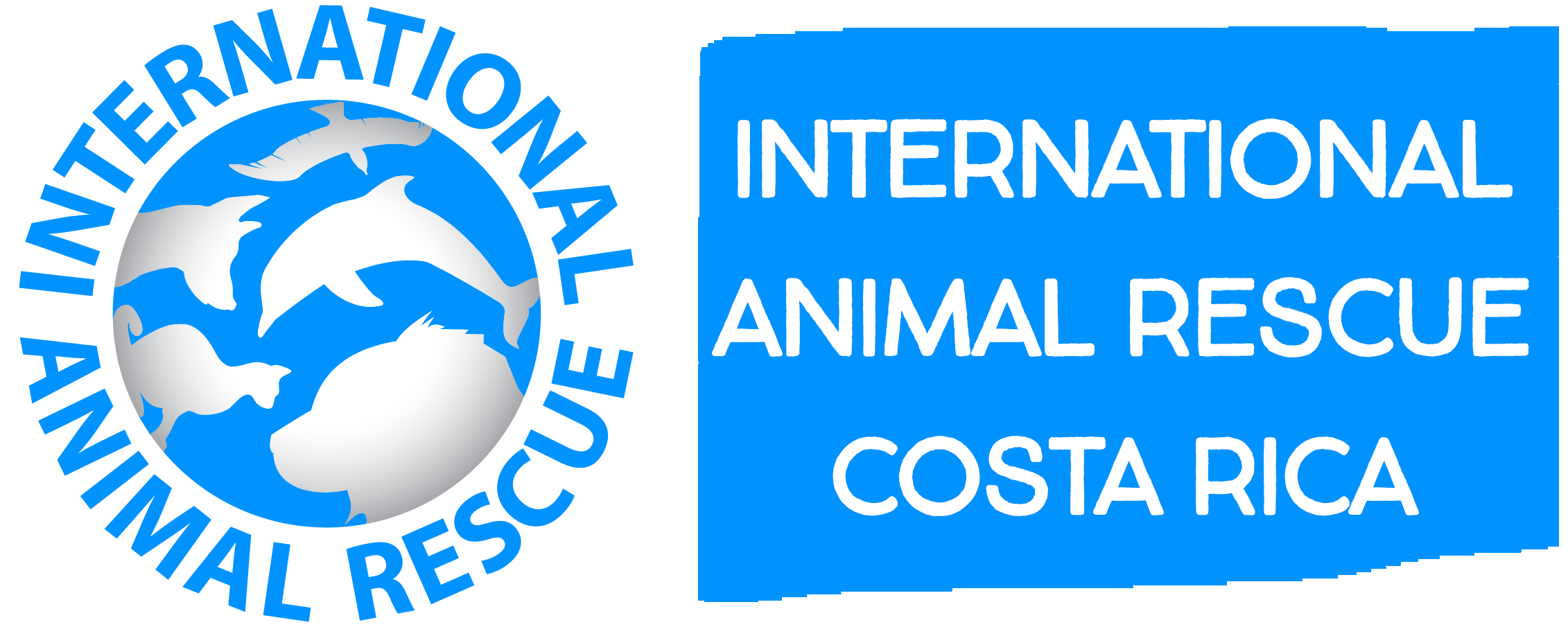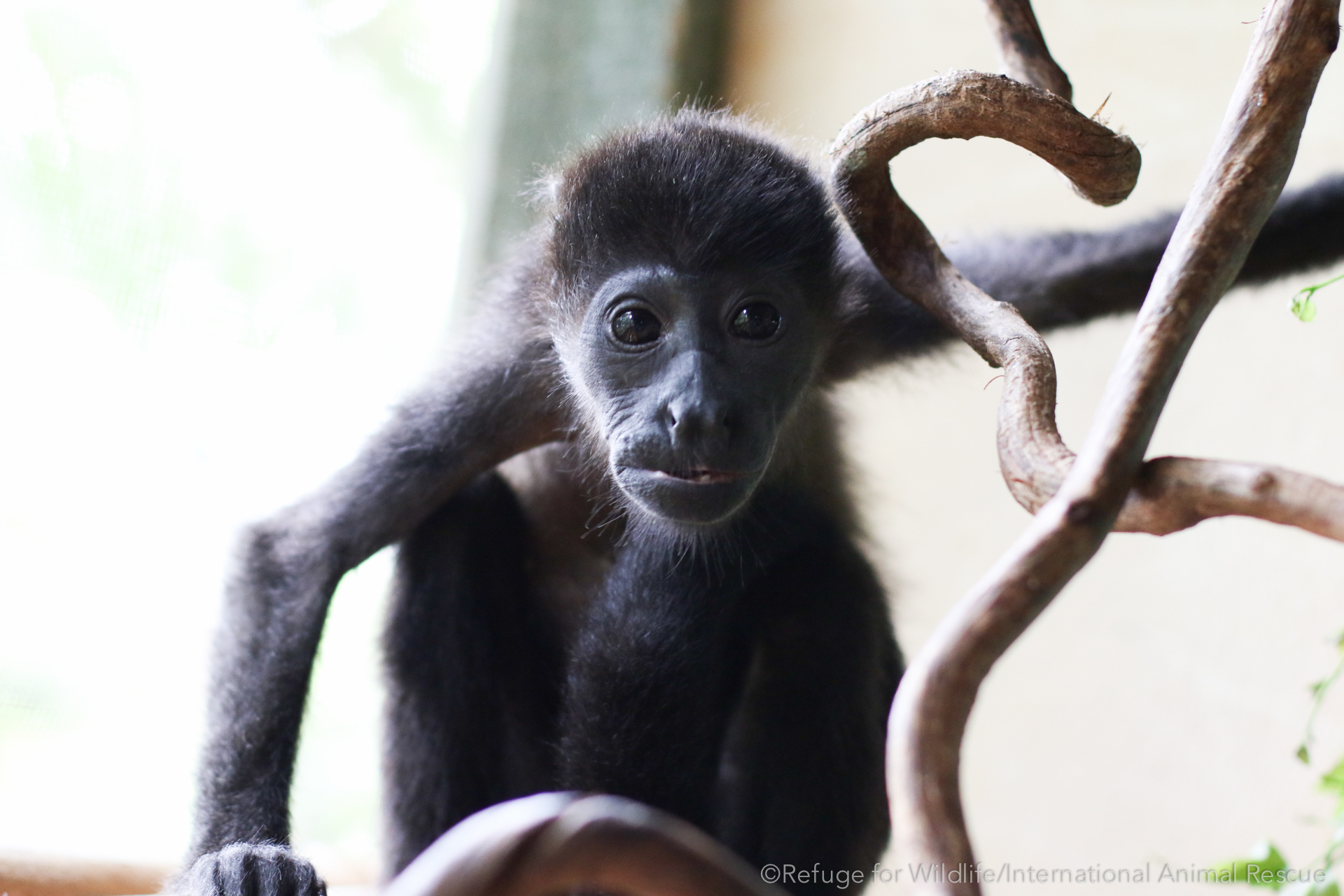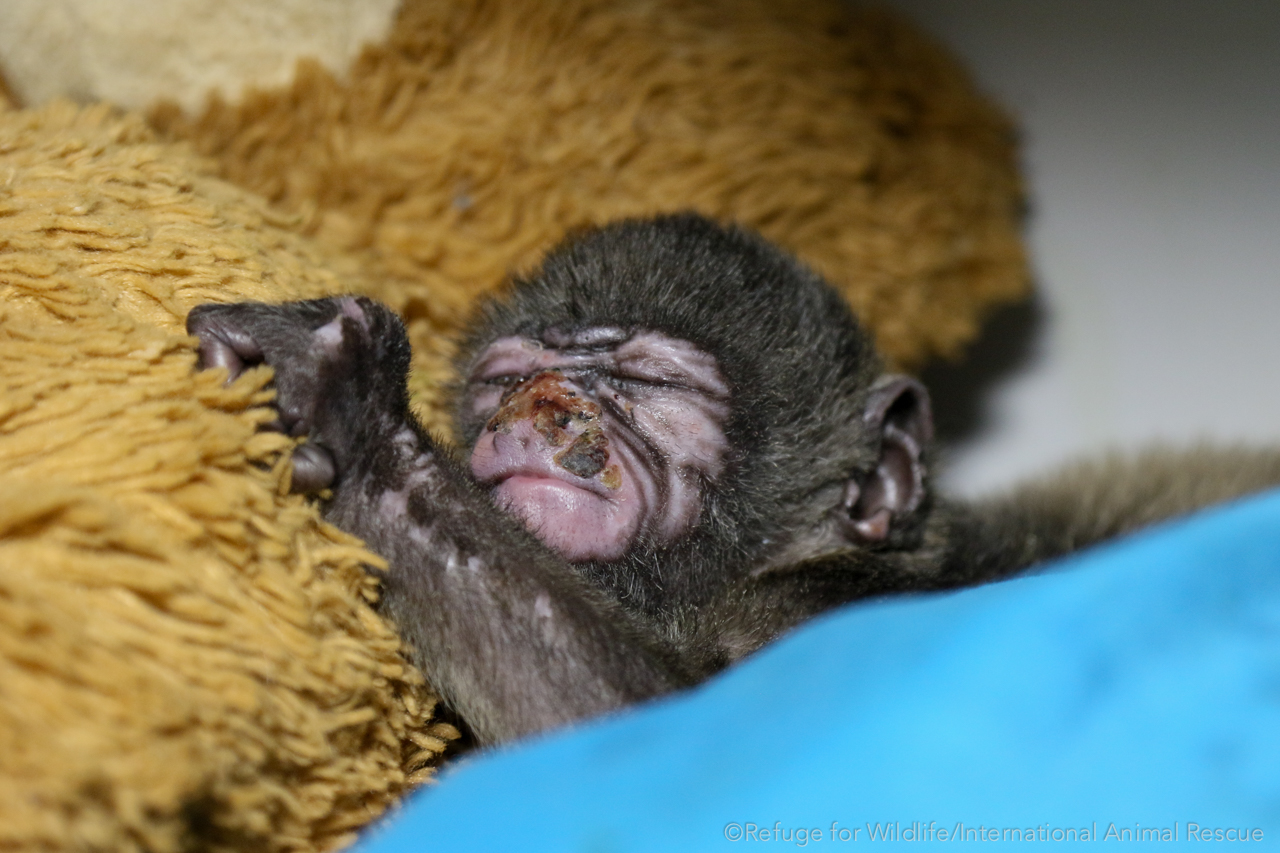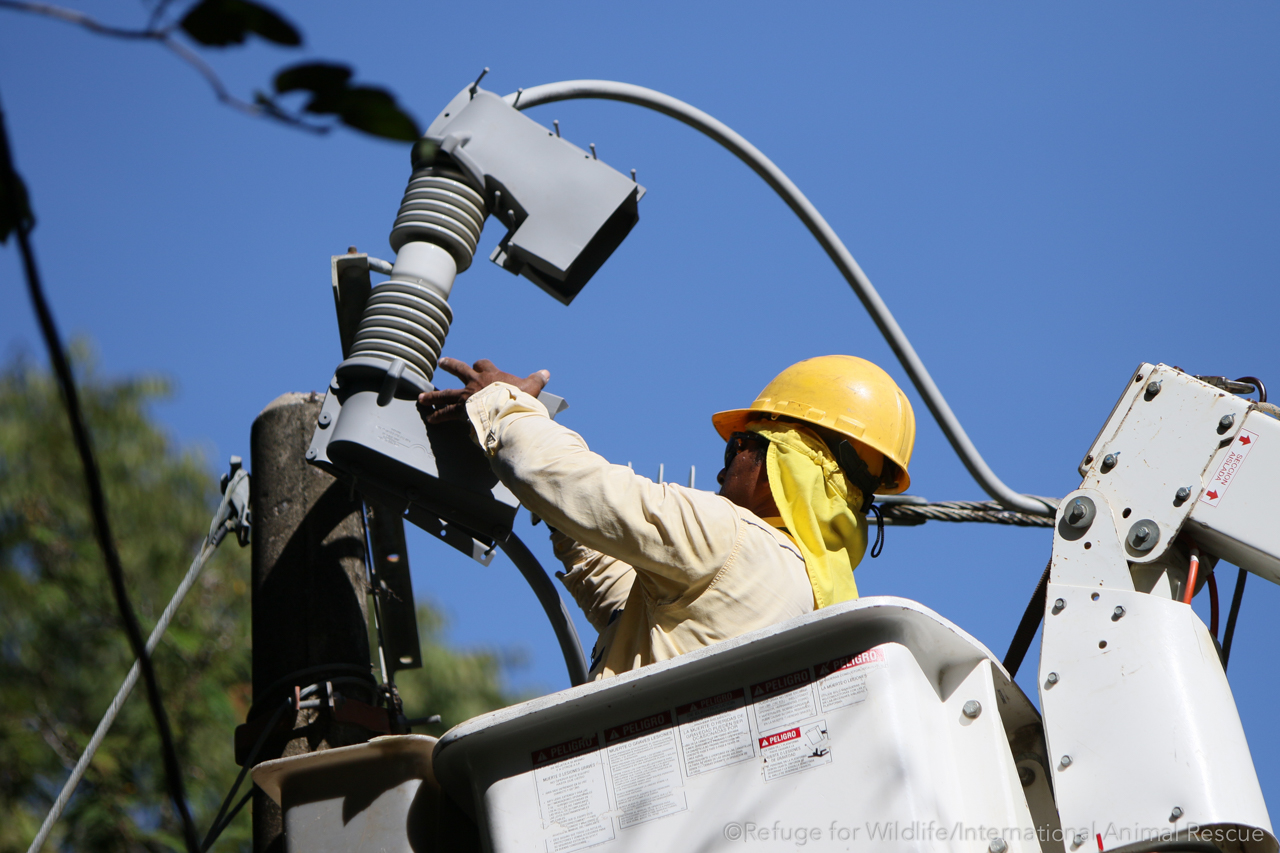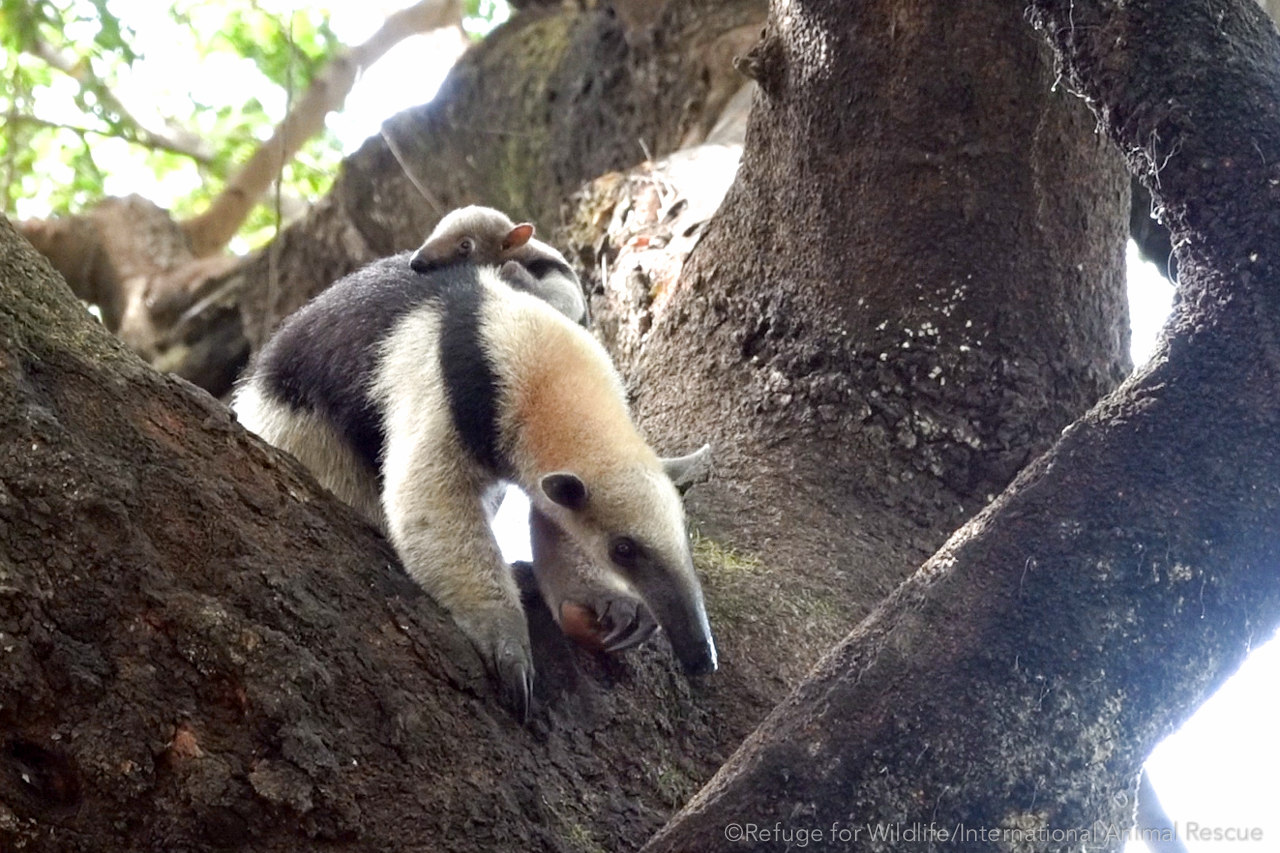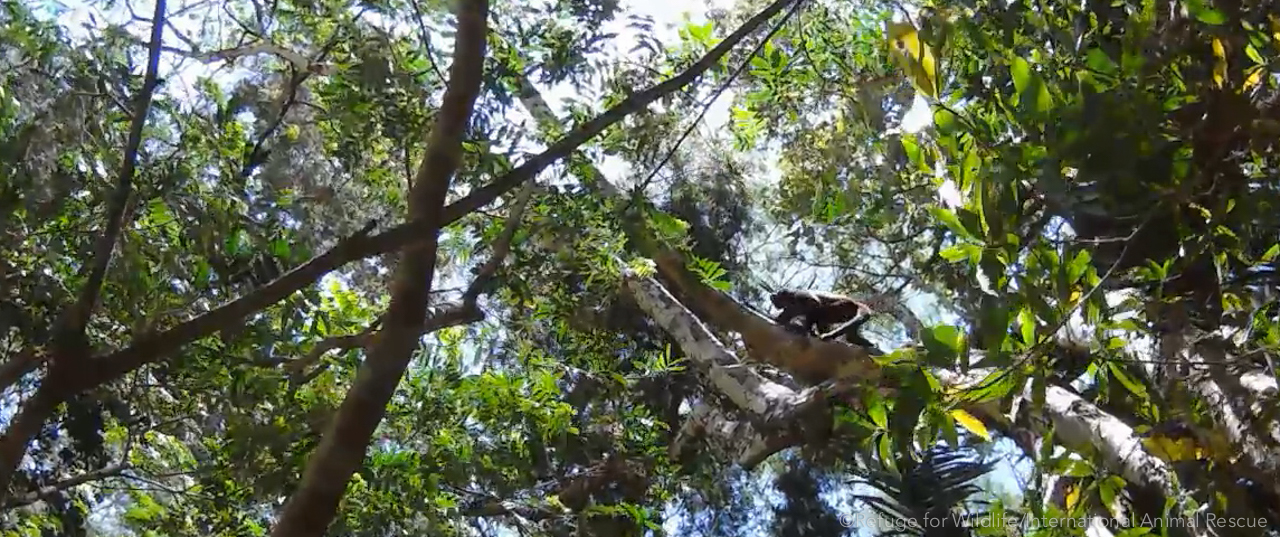
Howler Released After Orthopaedic Surgery Rehabilitation
 Marisol was released in late March after a lengthy rehabilitation at Refuge for Wildlife. Back in early July 2018, Marisol was injured when she was hit by a car in Tamarindo. Unfortunately, due to deforestation and development, natural tree crossings have been reduced and many howlers now must cross roads on the ground, risking their lives. Marisol’s leg was very badly broken and without orthopedic surgery in San Jose, it looked like we would have to amputate her leg. We have had success with this type of surgery in the past and we felt Marisol was a good candidate for the surgery.
Marisol was released in late March after a lengthy rehabilitation at Refuge for Wildlife. Back in early July 2018, Marisol was injured when she was hit by a car in Tamarindo. Unfortunately, due to deforestation and development, natural tree crossings have been reduced and many howlers now must cross roads on the ground, risking their lives. Marisol’s leg was very badly broken and without orthopedic surgery in San Jose, it looked like we would have to amputate her leg. We have had success with this type of surgery in the past and we felt Marisol was a good candidate for the surgery.

Marisol’s orthopedic surgery
Thanks to generous donations from the community, we were able to pay for Marisol’s surgery and save her leg from amputation! Dr Randall Arguedas and Dra. Marshia Solano from the Veterinary Clinic “Pet Groom Solution”, with the help of the Refuge’s Dr. Francisco Sánchez Murillo, performed the complicated surgery in San Jose a few days after Marisol’s rescue.

 The surgery was more complicated than expected and took 3 veterinarians 3.5 hours to repair because, unfortunately, once Marisol’s leg was opened, we found that the damage was more severe than shown on the x-ray. Not only was her femur completely snapped in half, but there was also another piece of the bone that had broken off. This made the placement of the screws for the titanium plate more difficult. In the end, it took a titanium plate, 5 screws, a pin through the center of the femur and a wire supporting the smaller broken piece of bone to stabilize the leg.
The surgery was more complicated than expected and took 3 veterinarians 3.5 hours to repair because, unfortunately, once Marisol’s leg was opened, we found that the damage was more severe than shown on the x-ray. Not only was her femur completely snapped in half, but there was also another piece of the bone that had broken off. This made the placement of the screws for the titanium plate more difficult. In the end, it took a titanium plate, 5 screws, a pin through the center of the femur and a wire supporting the smaller broken piece of bone to stabilize the leg.
 After the surgery, Marisol was in good spirits. Although she didn’t like receiving her injections for pain management, she was rewarded with a tasty monkey “smoothie” of sweet potato and apple to give her more energy and help her heal faster. Marisol gobbled it up! A good appetite is a great sign and Marisol recovered well. Unfortunately, it was this smaller piece of bone that resulted in a longer than expected recovery period for Marisol. Because of this, Marisol required intensive care from our dedicated staff who ensured she was well taken care of and comfortable during her rehabilitation.
After the surgery, Marisol was in good spirits. Although she didn’t like receiving her injections for pain management, she was rewarded with a tasty monkey “smoothie” of sweet potato and apple to give her more energy and help her heal faster. Marisol gobbled it up! A good appetite is a great sign and Marisol recovered well. Unfortunately, it was this smaller piece of bone that resulted in a longer than expected recovery period for Marisol. Because of this, Marisol required intensive care from our dedicated staff who ensured she was well taken care of and comfortable during her rehabilitation.

It took more than 4 months for the fractured bone to heal with Marisol needing kennel rest the entire time. Thankfully Marisol was an excellent patient! Throughout all her treatments and care, she has been calm and showed absolutely no signs of stress. She was very calm but was also one of the most “chatty” howlers we’ve had in our clinic. She enjoyed talking with other patients and was very curious and always interested in what was going on around her.
Unfortunately, once the bone had healed, we had to remove the titanium plate because the skin had a bad reaction to the metal. Although rare, this kind of bad reaction can happen which resulted in more recovery time needed for the incision to heal from removing the plate.
 Although her rehabilitation took much longer than expected, Marisol quickly regained the strength in her leg once she was moved into a larger outdoor enclosure and could safely build up the muscle again. Soon she was climbing without any problems, but she had, unfortunately, started to scratch her ankle. We didn’t want to take any risks with infection from those scratches because she was finally out of the clinic after so many setbacks which is why we applied the red bandage you will see in the photo. Thankfully the rest of her rehabilitation progressed without any further incident and Marisol was scheduled for release!
Although her rehabilitation took much longer than expected, Marisol quickly regained the strength in her leg once she was moved into a larger outdoor enclosure and could safely build up the muscle again. Soon she was climbing without any problems, but she had, unfortunately, started to scratch her ankle. We didn’t want to take any risks with infection from those scratches because she was finally out of the clinic after so many setbacks which is why we applied the red bandage you will see in the photo. Thankfully the rest of her rehabilitation progressed without any further incident and Marisol was scheduled for release!

As Marisol got closer to her release date, we introduced another female howler to her enclosure. Daniana was found by the side of the road in Tamarindo and was dehydrated and thin and only needed a few weeks of care from our veterinary staff before she was ready to be released. Marisol and Daniana became friends quickly and since they were both from the same area and both ready for release at the same time, releasing them together was ideal.
 In late March 2019, both Daniana and Marisol were released together in a heavily forested area far from roads and electrical cables. Daniana was very quick to run out of the kennel and quickly climbed into the trees. Marisol took a little longer and slowly climbed out of the kennel. Once she saw Daniana in the treetops, Marisol climbed quickly up into the canopy and to freedom.
In late March 2019, both Daniana and Marisol were released together in a heavily forested area far from roads and electrical cables. Daniana was very quick to run out of the kennel and quickly climbed into the trees. Marisol took a little longer and slowly climbed out of the kennel. Once she saw Daniana in the treetops, Marisol climbed quickly up into the canopy and to freedom.
Marisol’s accident, and the more than 8 months of rehabilitation could have been prevented. Although roads are a necessity for humans to travel, there are ways to provide safer crossings for wildlife. Through rope bridges, underground passageways and even simple, “Wildlife Crossing” signs and speed limits, we can prevent accidents like Marisol’s. We are very pleased that we were able to save Marisol’s leg, but we would much rather have prevented the injury in the first place. Tamarindo has many existing rope bridges installed by the Salve Monos non-profit group and they have recently installed several more rope bridge crossings to help arboreal wildlife cross roads safely to stop accidents in the future.

